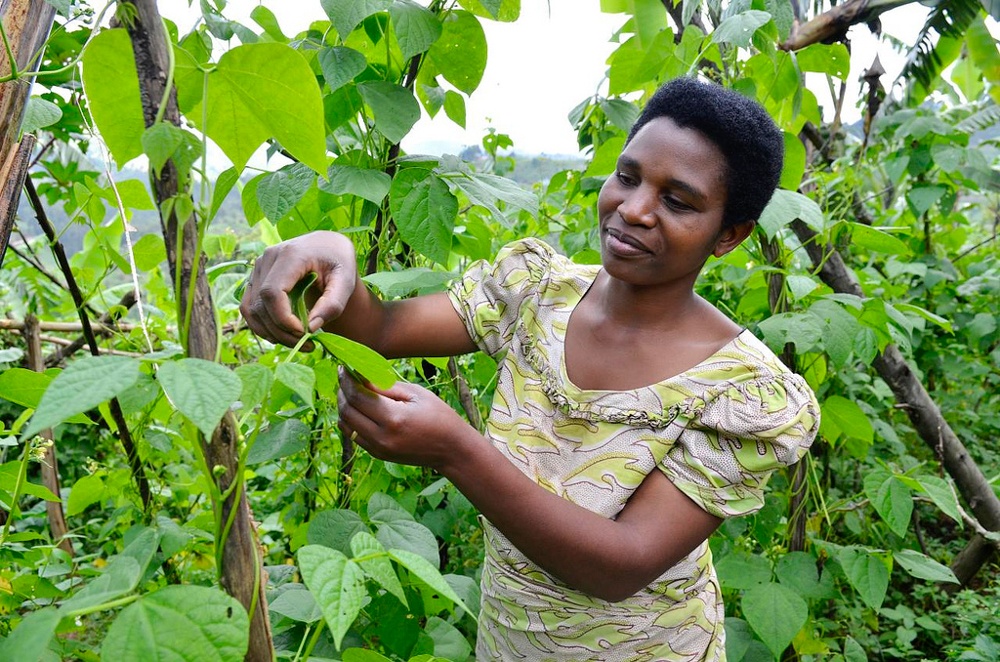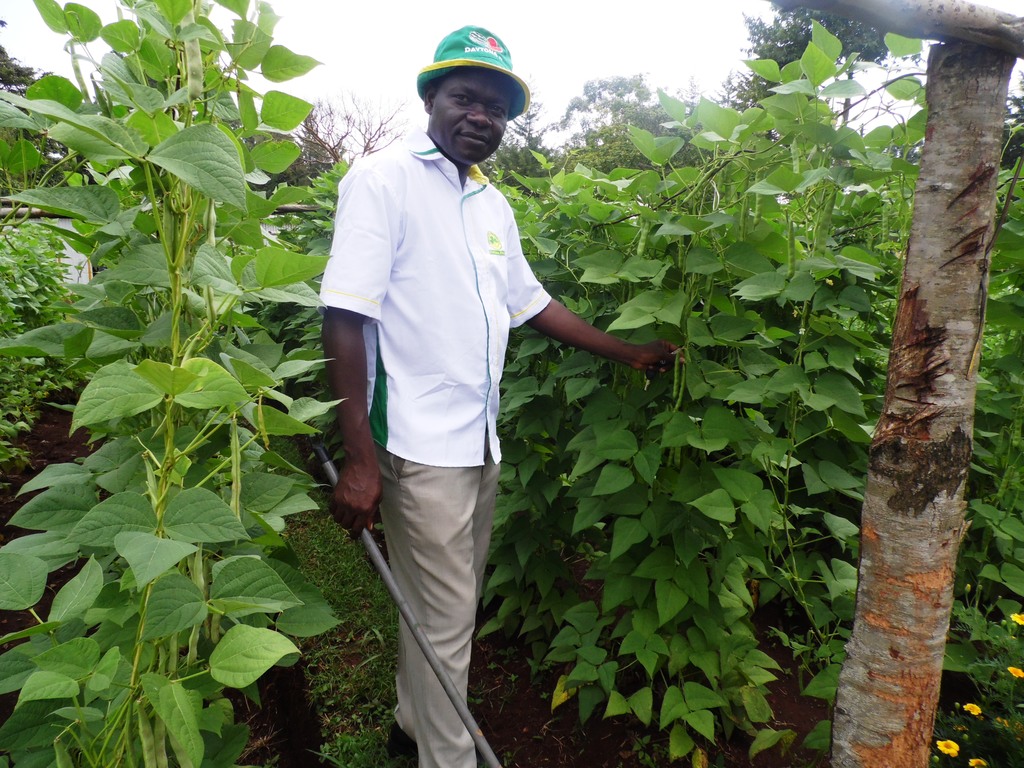Climbing Bean with High Yield and N Fixation
Summary
Climbing bean varieties offer higher yields but require more intensive cultivation compared to bush types. Improved varieties of climbing bean with high yield potential, resistance to pests and diseases, and tolerance to abiotic stresses are now available in Eastern and Southern Africa. Breeding and selection for higher biological nitrogen fixation in climbing bean has served not only to cut costs for farmers but also makes it possible to grow the crop in nitrogen depleted soils. Climbing bean cultivation by small-scale farmers in Africa is highly effective in alleviating hunger and malnutrition, and enhancing incomes.
About the Solution
Climbing beans, also called pole beans, are characterized by long, indeterminate growing vines that reach up to 4 or more meters in height and require support from stakes or trellises. Conventional breeding approaches resulted in a number of climbing bean varieties for different agroecosystems across Sub-Saharan Africa, including elite lines with higher nitrogen fixing ability and landraces adapted to local conditions. Traits such as bean productivity, nodulation efficacy and resistance to drought, diseases and insect pests are the focus of this varietal improvement, and HIB varieties are also available. Climbing beans are capable of giving two to four times the bean harvest of bush varieties since they develop a vertical canopy and have a longer harvest period.
Climbing beans offer the best option for small-scale farmers where landholdings are diminishing and degrading, and available varieties have been adapted to the soil and weather conditions in diverse production zones across Sub-Saharan Africa. For instance, targeted breeding of early maturing and heat tolerant lines has enabled expansion of climbing beans from its traditional high altitude to medium- and low-altitude areas with semi-arid climates. Their high nutritional value makes climbing bean varieties well-suited for processing into flour or other products, such as pre-cooked and canned beans, which can be retailed on local and international markets.
A large diversity of improved climbing bean varieties is available for multiplication by farmers, community-based seed producers and private seed companies. These varieties include Mid-Altitude Climbers (MAC) 13, 34 and 64 in Kenya, NABE 12 and NABE 26C/28C in Uganda, MAC 44 and RWV 1129 in Tanzania, and Gasillida, RWV 3317 and RWV 3006 in Rwanda. Improved varieties of climbing beans are ready for harvest within a period of 95-120 days, and have excellent palatability and a high starch content.
Suitable climbing bean varieties and accompanying crop and soil management practices form a technology bundle that must be tailored in accordance with agro-ecological conditions and socio-economic contexts. Climbing beans must be supported by stakes or trellises. Furthermore, they are best cultivated as a monocrop but it can be intercropped with maize, banana, roots and tubers, sorghum or millet. Planting is usually done on hills or ridges receiving organic inputs, particularly in clay soils or where the water table is high. Plant densities are determined by the particular trellising system and degree of mechanization, with the spacing between rows for a monocrop typically at 75-100 cm. To achieve the full yield potential of climbing beans and maintain soil fertility on farmlands, there is need for seed inoculation with rhizobia, timely planting, fertilization, strong and tall staking and proper weeding.
Commercialization
Commercially available
Solution Images
Institutions



